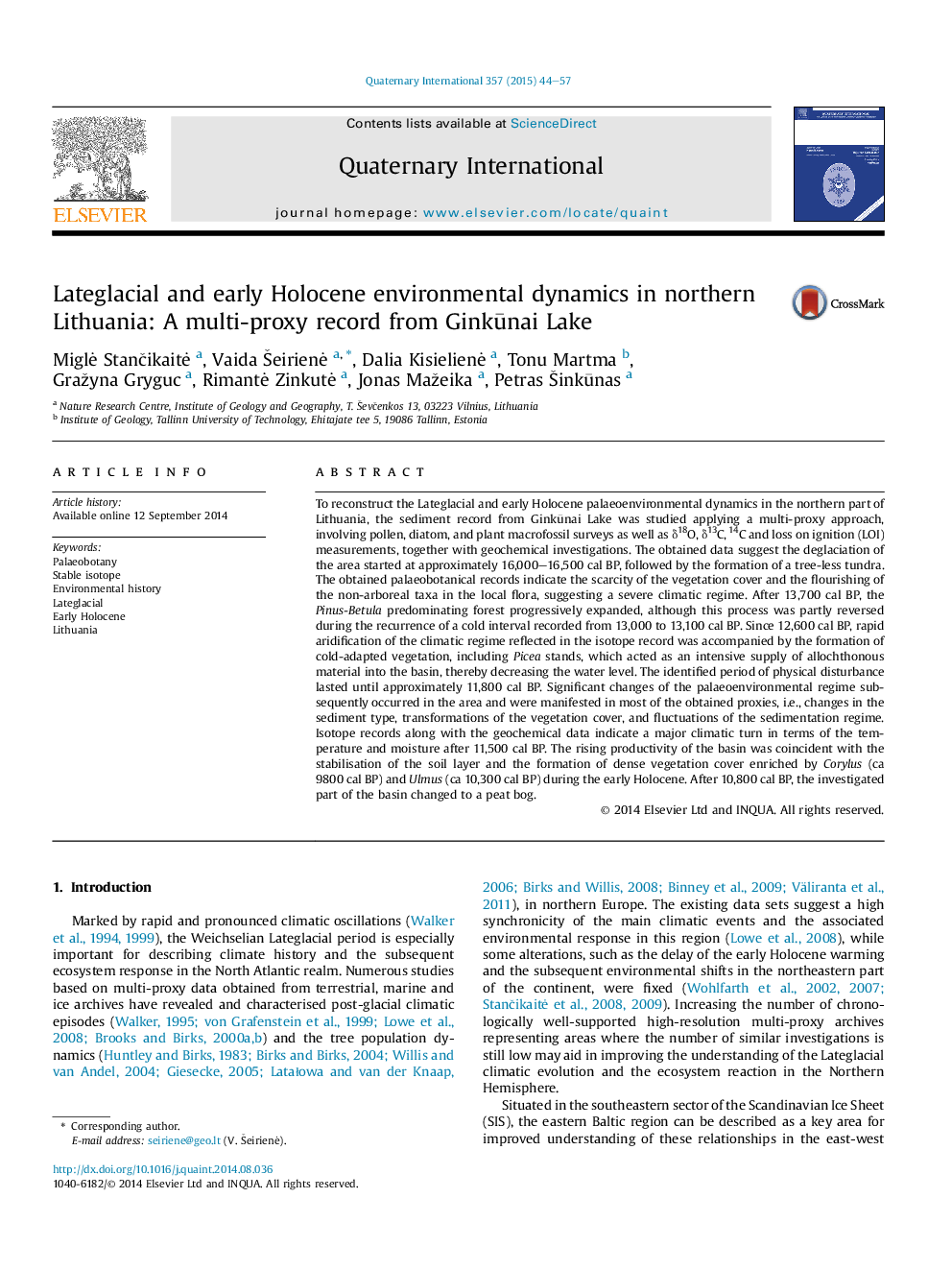| کد مقاله | کد نشریه | سال انتشار | مقاله انگلیسی | نسخه تمام متن |
|---|---|---|---|---|
| 7451884 | 1484139 | 2015 | 14 صفحه PDF | دانلود رایگان |
عنوان انگلیسی مقاله ISI
Lateglacial and early Holocene environmental dynamics in northern Lithuania: A multi-proxy record from Ginkūnai Lake
دانلود مقاله + سفارش ترجمه
دانلود مقاله ISI انگلیسی
رایگان برای ایرانیان
کلمات کلیدی
موضوعات مرتبط
مهندسی و علوم پایه
علوم زمین و سیارات
زمین شناسی
پیش نمایش صفحه اول مقاله

چکیده انگلیسی
To reconstruct the Lateglacial and early Holocene palaeoenvironmental dynamics in the northern part of Lithuania, the sediment record from Ginkūnai Lake was studied applying a multi-proxy approach, involving pollen, diatom, and plant macrofossil surveys as well as δ18O, δ13C, 14C and loss on ignition (LOI) measurements, together with geochemical investigations. The obtained data suggest the deglaciation of the area started at approximately 16,000-16,500 cal BP, followed by the formation of a tree-less tundra. The obtained palaeobotanical records indicate the scarcity of the vegetation cover and the flourishing of the non-arboreal taxa in the local flora, suggesting a severe climatic regime. After 13,700 cal BP, the Pinus-Betula predominating forest progressively expanded, although this process was partly reversed during the recurrence of a cold interval recorded from 13,000 to 13,100 cal BP. Since 12,600 cal BP, rapid aridification of the climatic regime reflected in the isotope record was accompanied by the formation of cold-adapted vegetation, including Picea stands, which acted as an intensive supply of allochthonous material into the basin, thereby decreasing the water level. The identified period of physical disturbance lasted until approximately 11,800 cal BP. Significant changes of the palaeoenvironmental regime subsequently occurred in the area and were manifested in most of the obtained proxies, i.e., changes in the sediment type, transformations of the vegetation cover, and fluctuations of the sedimentation regime. Isotope records along with the geochemical data indicate a major climatic turn in terms of the temperature and moisture after 11,500 cal BP. The rising productivity of the basin was coincident with the stabilisation of the soil layer and the formation of dense vegetation cover enriched by Corylus (ca 9800 cal BP) and Ulmus (ca 10,300 cal BP) during the early Holocene. After 10,800 cal BP, the investigated part of the basin changed to a peat bog.
ناشر
Database: Elsevier - ScienceDirect (ساینس دایرکت)
Journal: Quaternary International - Volume 357, 30 January 2015, Pages 44-57
Journal: Quaternary International - Volume 357, 30 January 2015, Pages 44-57
نویسندگان
MiglÄ StanÄikaitÄ, Vaida Å eirienÄ, Dalia KisielienÄ, Tonu Martma, Gražyna Gryguc, RimantÄ ZinkutÄ, Jonas Mažeika, Petras Å inkÅ«nas,